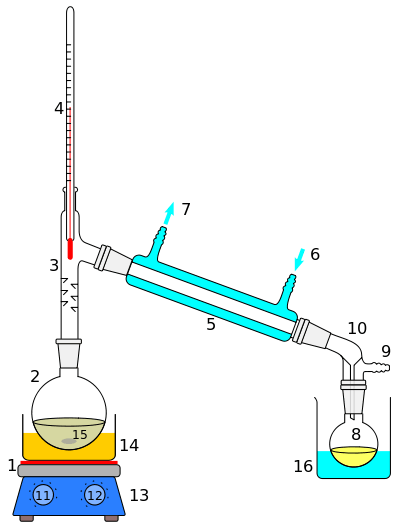Alembic

An alembic (Arabic الأنبيق (al-anbīḳ) from Greek ἄμβιξ (ambix), "cup, beaker")[1][2][3] is an alchemical still consisting of two vessels connected by a tube, used for distilling chemicals.
Description
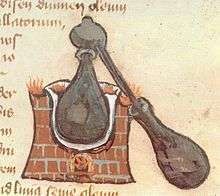
The complete distilling apparatus consists of three parts: the "cucurbit" (Arabic ḳarʿa, Greek βίκος), the still pot containing the liquid to be distilled, which is heated by a flame; the "head" or "cap" (Arabic anbiḳ, Greek ἄμβιξ) which fits over the mouth of the cucurbit to receive the vapors, with an attached downward-sloping "tube" (Greek σωλήν), leading to the "receiver" (Arabic ḳābila, Greek ἄγγος or φιάλη) container. Retorts have the "cap" and the "cucurbit" made into one. The anbik is also called the raʾs (head) of the cucurbit. The liquid in the cucurbit is heated or boiled; the vapour rises into the anbik, where it cools by contact with the walls and condenses, running down the spout into the receiver. A modern descendant of the alembic is the pot still, used to produce distilled beverages.
History

Dioscorides' ambix (described in his De materia medica) is a helmet-shaped lid for gathering condensed mercury. For Athenaeus (~ 225 C.E.) it is a bottle or flask. For later chemists it denotes various parts of crude distillation devices.
Alembic drawings appear in works of Cleopatra the Alchemist, Synesius, and Zosimos of Panopolis. There were alembics with two (dibikos) and three (tribikos) receivers.[4] According to Zosimos of Panopolis, the alembic was invented by Mary the Jewess.[5]
The anbik is described by Ibn al-Awwam in his Kitab al-Filaha (Book of Agriculture), where he explains how rose-water is distilled. Amongst others, it is mentioned in the Mafatih al-Ulum (Key of Sciences) of Khwarizmi and the Kitab al-Asrar (Book of Secrets) of Al-Razi. Some illustrations occur in the Latin translations of works which are attributed to Geber.[2]
Gallery
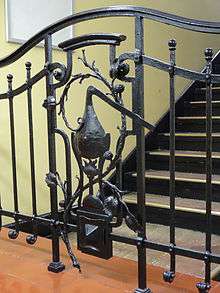
-

Glass alembic
-
.jpg)
Modern alembic
-
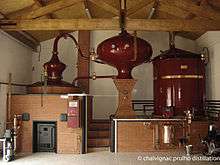
Large "charentais" type alembic for distilling spirits
-
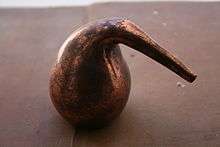
Copper retort
See also
References
- ↑ M. Ullmann (1986), "AL-KĪMIYĀ", The Encyclopaedia of Islam, 5 (2nd ed.), Brill, p. 111b, ISBN 90-04-07819-3
- 1 2 E. Wiedemann; M. Plessner (1986), "AL-ANBĪḲ", The Encyclopaedia of Islam, 1 (2nd ed.), Brill, p. 486a, ISBN 90-04-08114-3
- ↑ Henry Liddell; Robert Scott, eds. (1897), "ἄμβιξ", A Greek–English Lexicon (8th ed.), Harper & Brothers, p. 73
- ↑ Marcellin Berthelot (1889), Introduction à l'étude de la chimie des anciens et du moyen âge, Steinheil, pp. 132, 135–142, 161–164
- ↑ Edmund Lippmann (1919), Entstehung und Ausbreitung der Alchemie, Springer, pp. 48–49
